Key takeaways:
- DNA testing offers insights into ancestry and genealogical connections, uncovering hidden family stories and fostering emotional ties to heritage.
- Different types of DNA tests (autosomal, Y-DNA, mitochondrial, and health-related) each provide unique perspectives on lineage and personal history.
- Interpreting DNA results is a nuanced process that benefits from critical thinking, personal narratives, and community engagement to enhance understanding.
- Discovering unknown relatives through DNA can lead to profound personal connections, reshaping one’s understanding of family and identity.
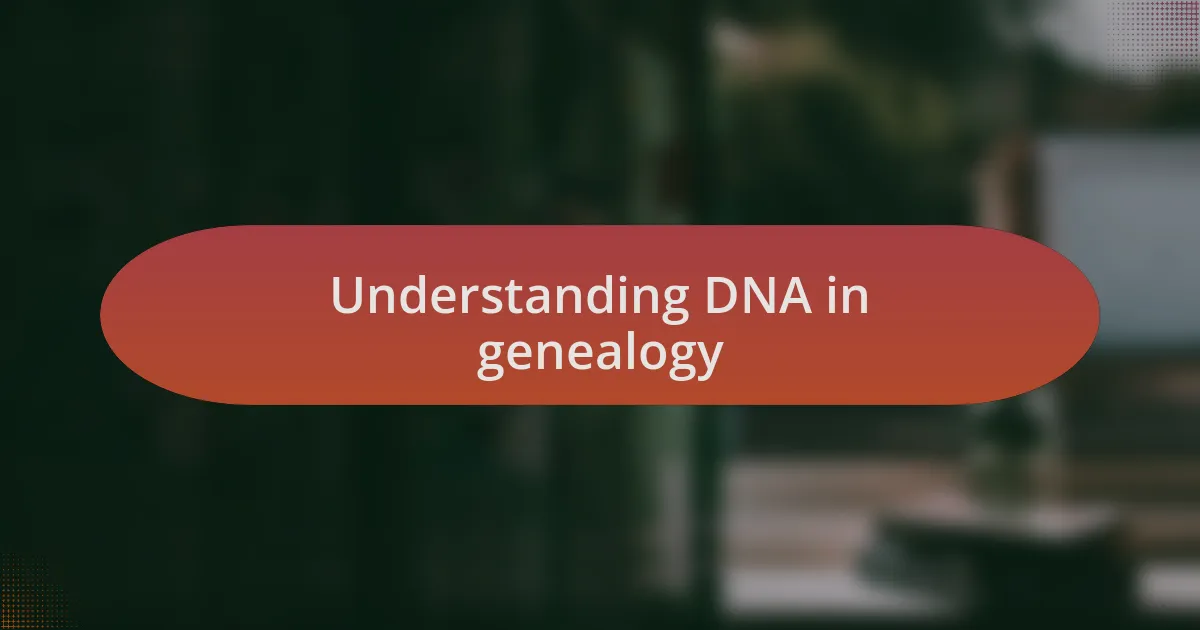
Understanding DNA in genealogy
Understanding DNA in genealogy opens up a fascinating window into our ancestral roots. When I first received my DNA test results, I was stunned by the unexpected connections it revealed. It made me wonder: how could a simple strand of DNA hold the key to unlocking family mysteries that spanned generations?
DNA testing in genealogy uses genetic markers to trace lineage and identify relationships. For me, discovering a newfound cousin I never knew existed through a match felt like uncovering a hidden chapter of my family story. I often find myself reflecting on how these genetic puzzles not only highlight our biological connections but also spark a deep curiosity about our shared heritage.
As I delved deeper into my results, I realized that the science behind DNA can illuminate patterns of migration and cultural heritage in a way that traditional records may miss. Have you ever felt a tug at your heart when thinking about where your ancestors came from? It’s this emotional journey, driven by genetic evidence, that brings a richer understanding of who we are and where we fit in the tapestry of human history.
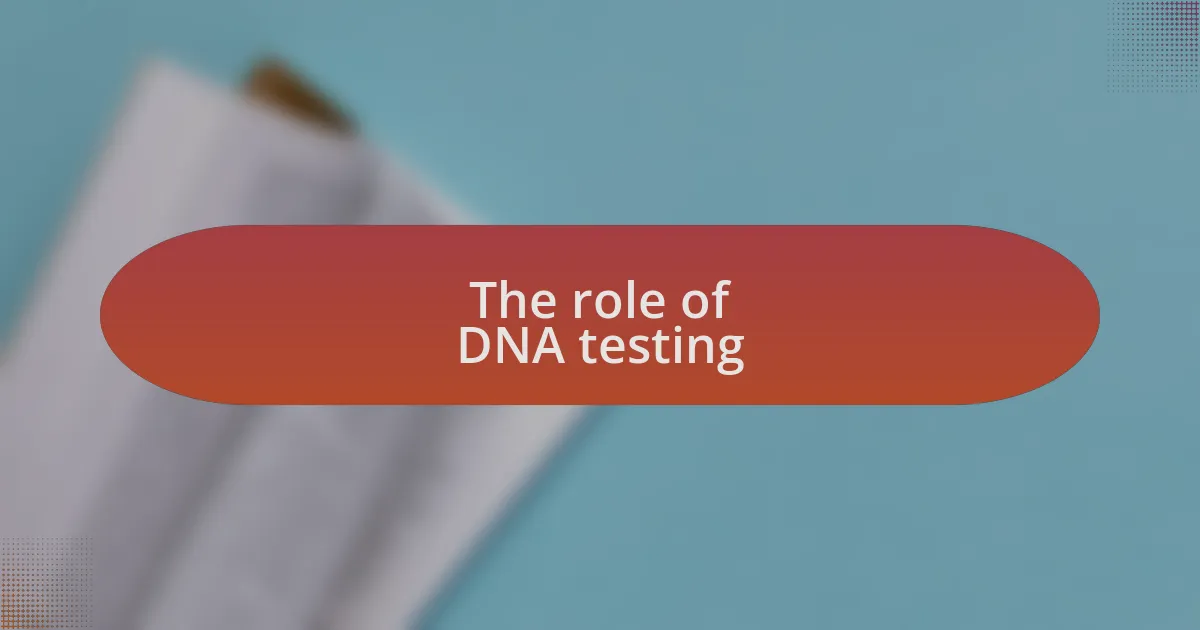
The role of DNA testing
DNA testing has become a vital tool in genealogy, allowing individuals like me to bridge the gaps left by historical records. I’ll never forget the moment I looked at my ancestry breakdown—a mixture of regions and cultures swirled together like a beautiful quilt. It made me ponder: how many stories are hidden within these percentages?
Beyond just names and dates, DNA testing taps into the essence of our heritage. When I found out that a certain portion of my DNA traced back to a specific region, it sparked a desire to explore that area. I began to imagine my ancestors walking the same paths, experiencing the same landscapes, and that thought filled me with pride and connection I never expected.
The emotional gravity of these discoveries can be profound. Each match, each unexpected tie to someone new feels like a thread being woven into the fabric of my family’s narrative. How does one quantify the excitement of finding a distant relative? For me, it’s the thrill of unraveling mysteries that not only redefine my family history but also create a deeper appreciation for the diverse tapestry that comprises our lineage.
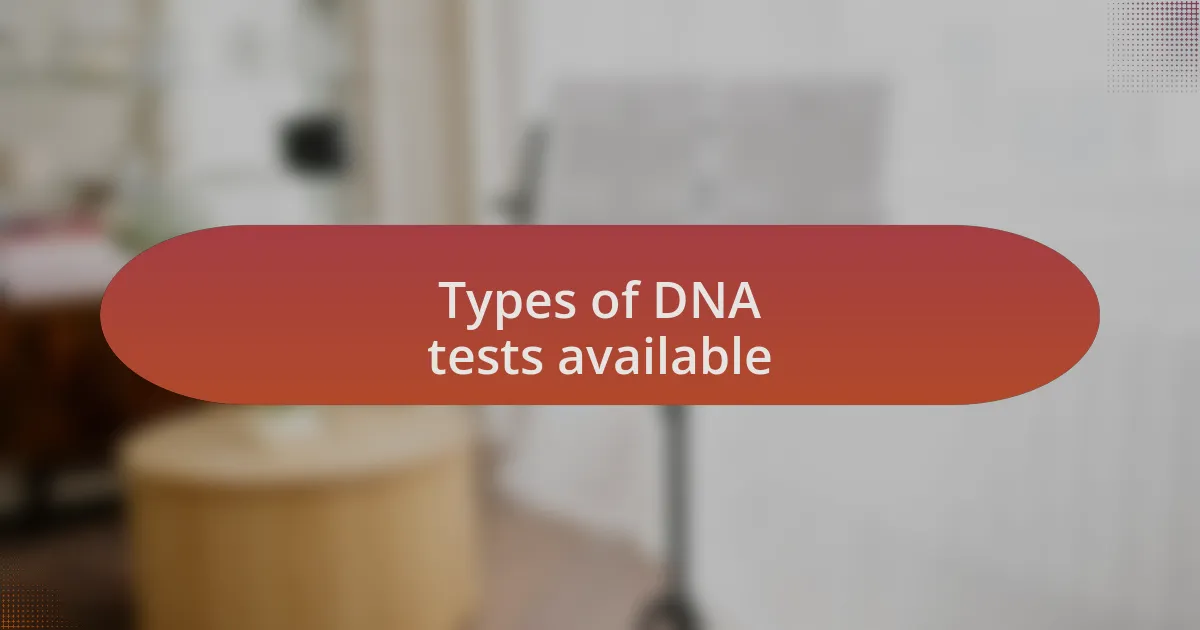
Types of DNA tests available
When diving into the world of DNA testing, I discovered several types, each offering unique insights into my ancestry. Autosomal DNA tests, for example, examine chromosomes inherited from both parents and can connect you with relatives across multiple generations. I remember the thrill of connecting with a distant cousin through this test—our shared ancestry seemed like an unexpected gift from the past.
Y-DNA and mitochondrial DNA tests take a different approach, focusing on direct paternal and maternal lineage, respectively. These tests are crucial for individuals wanting to trace their direct lineages. After taking a Y-DNA test, I learned about my surname’s geographic origin, which ignited my curiosity about that place and the stories tied to my ancestors. Have you ever thought about how a simple piece of information can redirect your exploration in such a profound way?
Lastly, there are health-related DNA tests that can often seem out of place in the genealogy realm. However, they’re valuable too, as they can reveal genetic predispositions affecting family history. When I received insights about potential health traits in my DNA, it felt like unlocking a different chapter of my family’s story—one intertwined with both our lineage and our shared health journey. Isn’t it fascinating how our genetic code carries not just the past, but also a hint of our future?
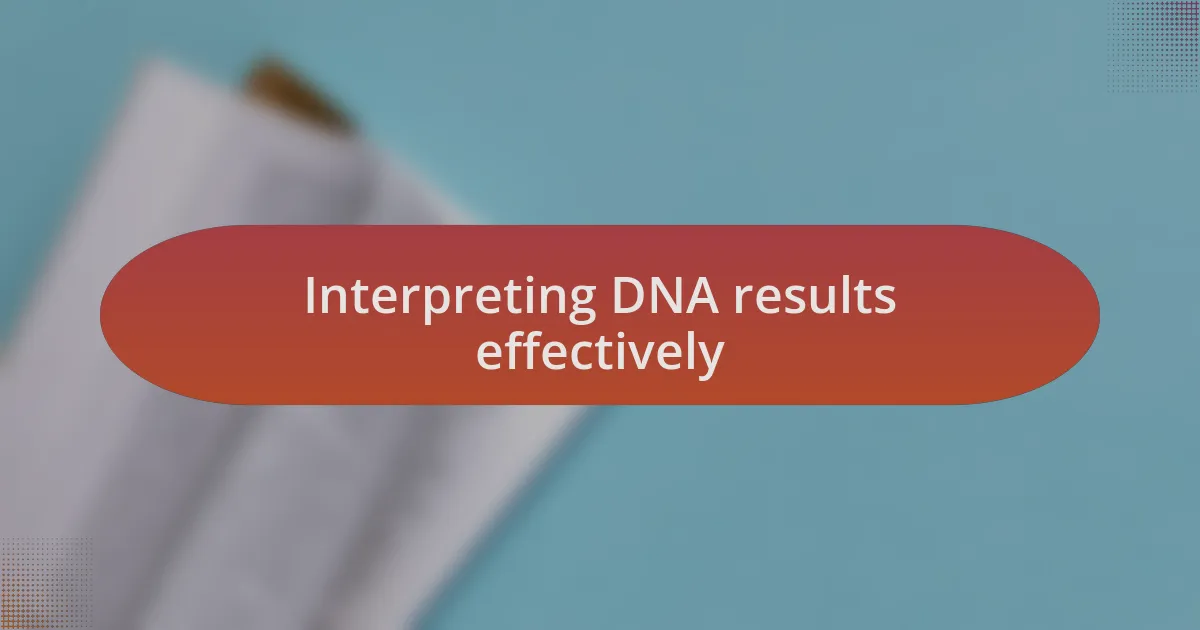
Interpreting DNA results effectively
Interpreting DNA results effectively requires not just an understanding of what the numbers mean but also a personal touch to the information they provide. When I first examined my results, I felt a mixture of excitement and confusion. The ethnic percentages were novel to me, and I wondered how accurately they reflected the stories my family relayed at the dinner table. Do you remember the first time you saw such a detailed breakdown of your heritage? It prompted me to think critically about my family’s narratives, as I sought connections between the DNA data and stories I grew up hearing.
As I delved deeper, I realized that interpreting these results isn’t about accepting everything at face value. For instance, I had a significant marker from a region that none of my family stories talked about. At first, it felt like a puzzle piece that didn’t fit. However, as I researched local histories and even consulted with family members, I discovered that a distant ancestor may have migrated through that region. This moment taught me that the journey isn’t solely about the results; it’s about the stories behind them. Don’t you think it’s remarkable how one piece of data can unlock countless avenues for exploration?
Additionally, I found that connecting with others who shared similar DNA results enriched my understanding immensely. Joining forums and groups allowed me to share interpretations and gain insights from various perspectives. I remember exchanging messages with someone who had a similar ancestry profile, which led to a thrilling discovery of shared ancestors. Engaging with a community holds the potential to transform isolated findings into a broader family narrative. Isn’t it amazing how these connections can change a solitary experience into a collaborative journey of discovery?
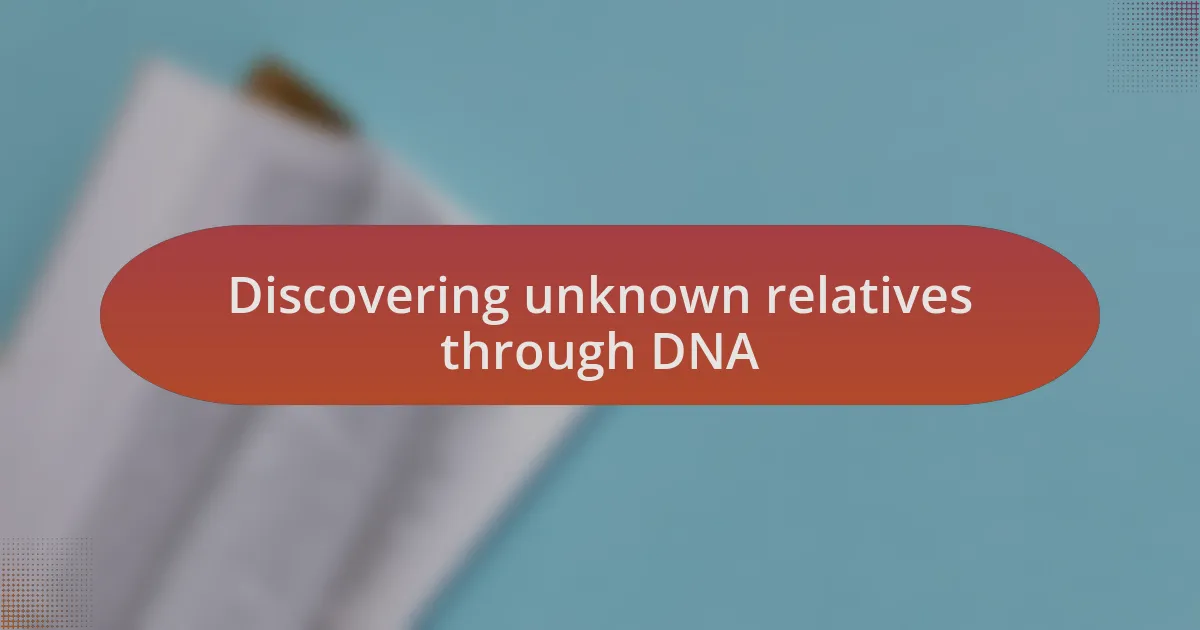
Discovering unknown relatives through DNA
The first time I received my DNA results, it felt like opening a door to a new world. Among the unexpected revelations, I found a couple of names tied to my results that I had never heard before. These were matches I couldn’t wait to explore, prompting me to reach out and connect with these newfound relatives, leading to a series of conversations filled with shared stories and laughter. Have you ever made a new friend from an unexpected source?
As I began to unearth more connections, a sense of familial belonging washed over me. One particular match revealed a cousin I never knew existed, and when we spoke on the phone, it felt strikingly familiar—like catching up with an old friend. It amazed me how a simple DNA test could bridge decades of separation and create bonds that felt instant and real. Isn’t it incredible how genetics can sometimes outpace the boundaries of time and distance?
In one instance, I came across a half-sibling, a discovery that shifted my understanding of family entirely. Both thrilling and daunting, it pushed me to confront feelings I hadn’t anticipated. The conversation that followed was raw and honest. We shared bits of our lives, piecing together fragments of our shared history, almost like discovering a long-lost page from a family story we never knew existed. It made me reflect on how our identities are intertwined with the people we have yet to meet, empowering us to see family in a whole new light. How has a single discovery in your own family history reshaped your understanding of who you are?